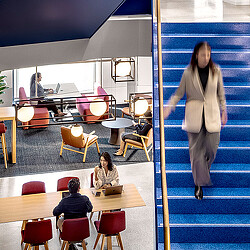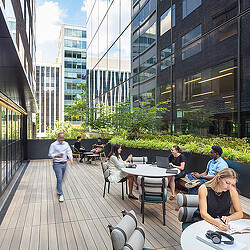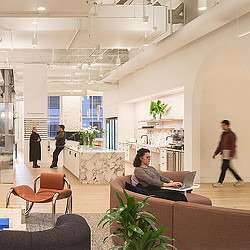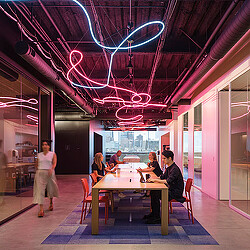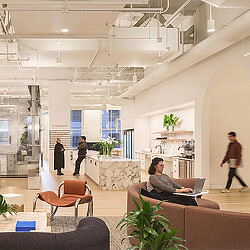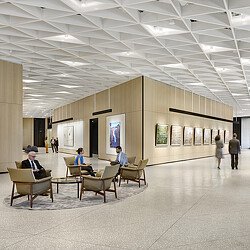Repopulating the Workplace: Why Collaboration Space Is in Danger
Despite their value, collaboration spaces are often the first to go when companies are looking for ways to repopulate the workplace.
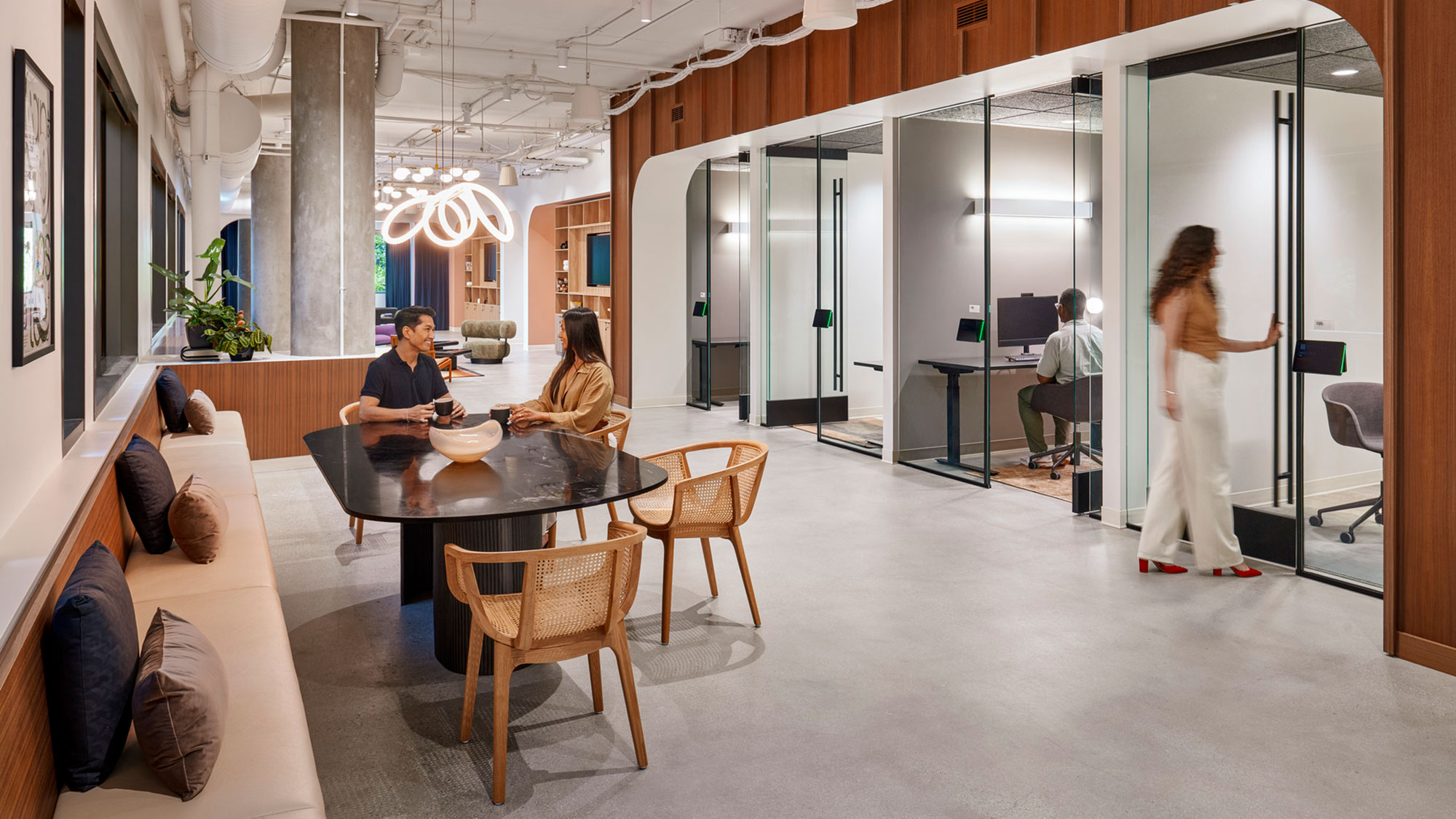
Editor’s note: This article was originally published in Work Design Magazine.
In the aftermath of the pandemic and the resulting shift to remote and hybrid work models, many organizations have reduced their real estate footprint, in some cases, significantly. Today, as more and more companies look to increase office presence for employees, they are having to rethink their workplace strategies to accommodate a greater daily population.
They’re grappling with whether to lease more space or repurpose shared space to accommodate increased demand for workstations and offices. This dilemma is a microcosm of broader organizational challenges that often pit financial considerations against employee needs and cultural implications.
Why Collaboration Space Increased as Footprints Decreased
The pandemic prompted a paradigm shift in how offices are used. The purpose of the office was less about individual work and more about interactive work. Traditional cubicles gave way to more open, collaboration-focused layouts with minimal shared individual space types. Meeting rooms increased in number and variety, and breakout spaces, huddle rooms, and lounge areas became the focal points, designed to foster interaction and innovation while accommodating a workforce that spent significant time working remotely.
This shift was a strategic response to changing work patterns, but also one that delivered efficiency. Repurposing underutilized individual space to collaboration space aligned the workplace to a hybrid and remote workforce while still leaving a significant amount of excess space that could be shed, saving businesses often millions of dollars in overhead costs while also signaling a commitment to flexibility.
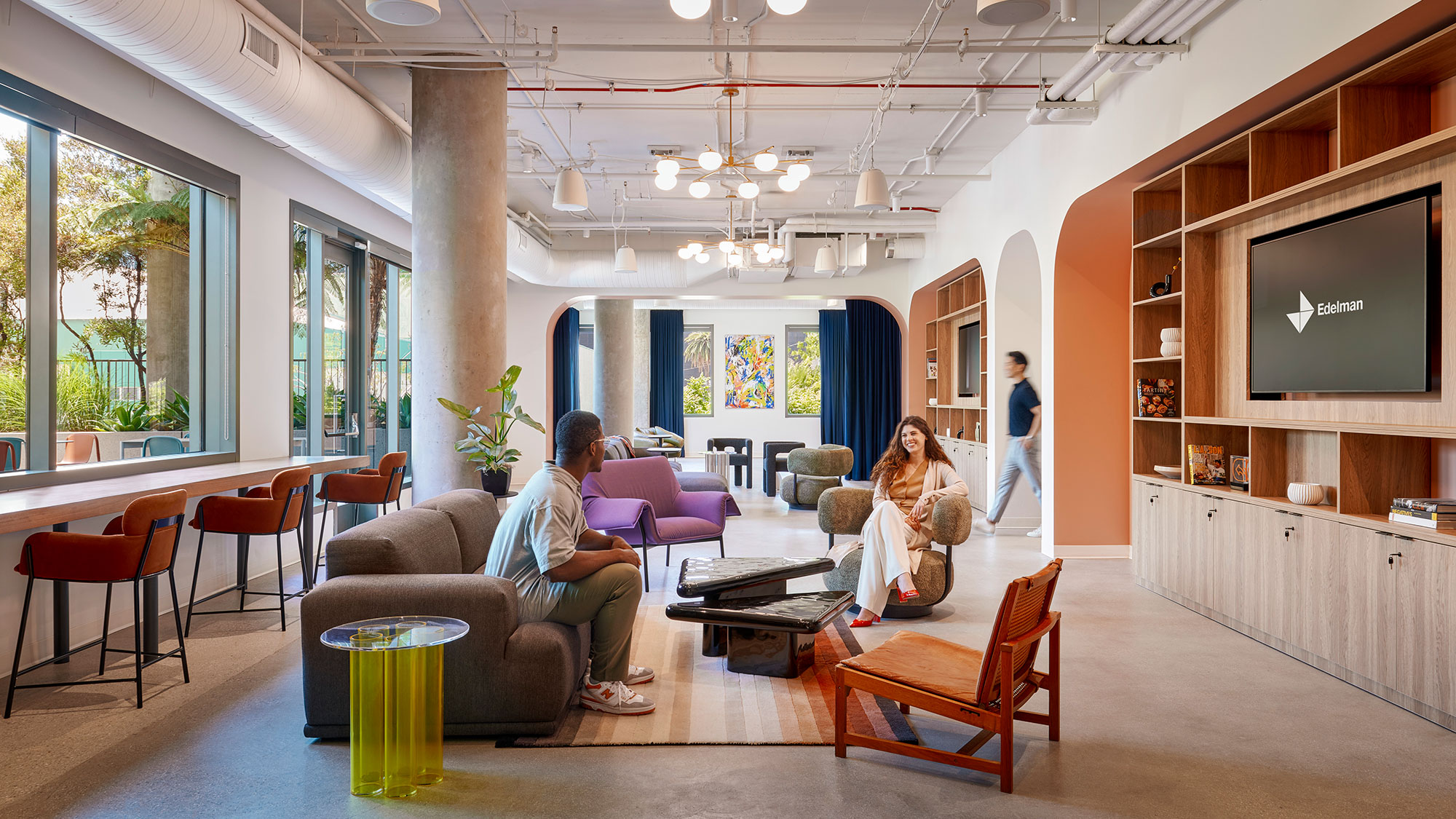
The Conundrum
Fast-forward to today. Many organizations find they’ve painted themselves into a corner.
As policies shift to increase days in the office, workplaces that had been downsized are running into capacity issues, especially on peak office days. The mix of spaces designed for a remote workforce — mostly focused on collaboration — are short on seats to accommodate individual work.
The almost default solution companies are taking to solve this problem is to repurpose open collaboration space into individual workstations and small enclosed meeting rooms and huddle rooms into private offices. It seems like a harmless trade-off, and maybe even an improvement in terms of informal collaboration spaces, which are often not highly used and may sit empty for a good portion of the day.
From a financial standpoint, this approach makes sense. It allows businesses to manage the influx of employees without taking on more space. While lower than before the pandemic, commercial real estate costs are still high, and economic uncertainty makes committing to new leases a risk many organizations would like to avoid. On its face, repurposing existing collaboration spaces to individual space seems like a win-win solution: a cost-effective way to accommodate more employees while maintaining financial discipline.
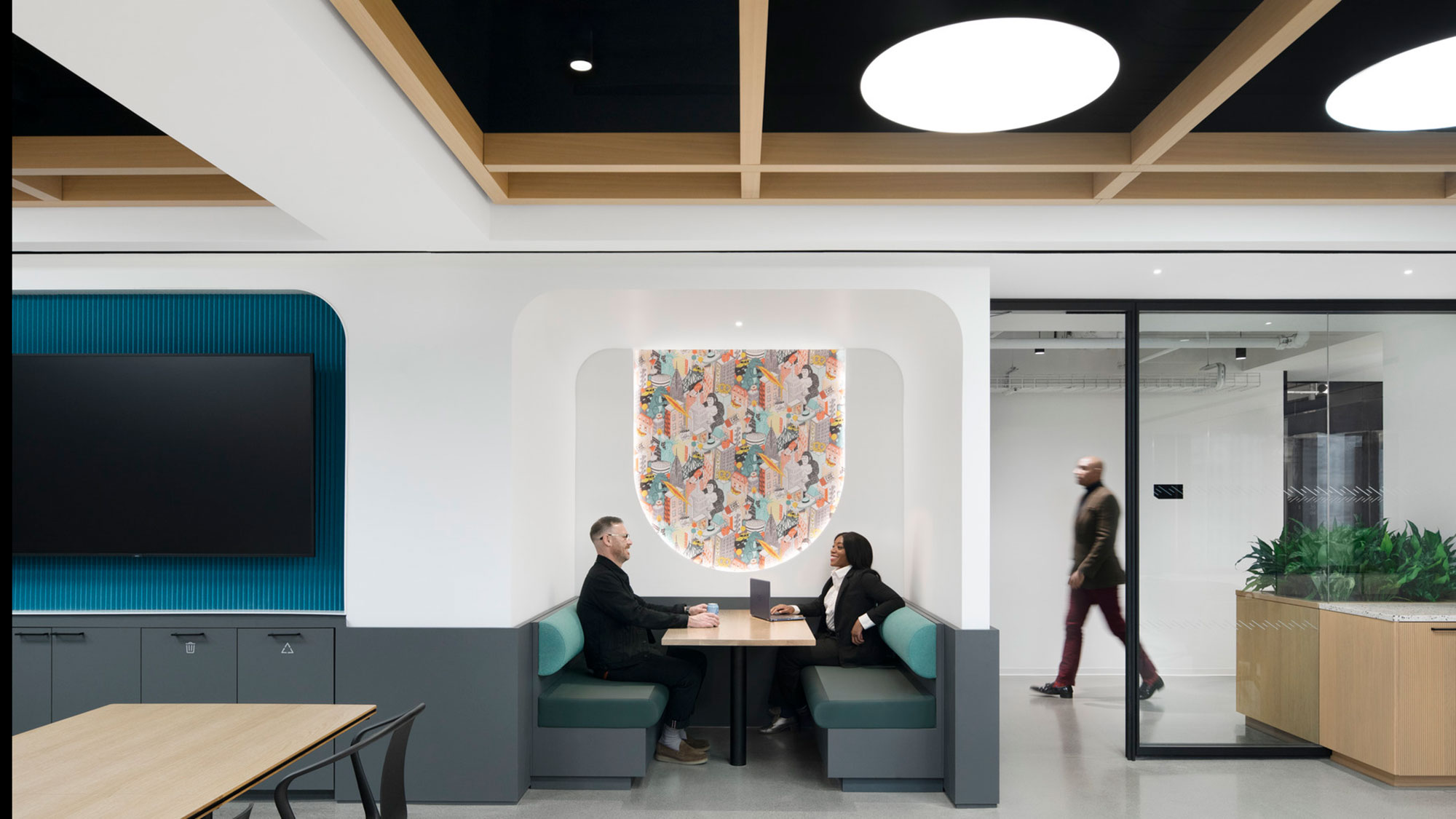
Why It’s the Wrong Solution
The root of the problem with the prevailing solution — repurposing “we” space to “me” space — is that it’s missing the whole point behind repopulating the office: companies want people back in the office so they can collaborate more, so they can interact more, so they can learn and grow from and with each other. Decreasing the space types that allow and encourage collaboration and interaction to happen, and putting in more individual seats is working against the goal, not for it. It’s self-defeating.
That in itself is problematic, but it’s also a quick way to frustrate people, many of whom may already be resistant to new office presence requirements. “If my team is just going to sit at our desks doing Zoom calls because we can’t find a collaboration space, why not just stay home?”
A company’s desire to increase in-person collaboration is not capricious. There is ample research proving in-person teams are more collaborative, more cohesive, and that they come up with better solutions. Physical presence allows for better non-verbal communication, immediate interaction, and deeper relationships. Virtual meetings are more transactional, less productive, less engaging (some estimates put the percentage of people who multitask during virtual meetings as high as 92%), and simply less enjoyable. As the essayist Sarah Robinson so aptly puts it, a video conference call is “like eating without tasting.” It checks the box on meeting but is entirely unsatisfying.
The workplace environment communicates with the people within it, both consciously and subconsciously. Incorporating collaboration spaces of different sizes and types, open and closed, tells people that collaboration is valued and encouraged by the organization. Proximity and ample availability make collaboration easy to do, and more likely to happen. Just as a store putting gum near the checkout counter makes it more likely a person will buy it, putting collaboration spaces throughout the work floor makes it more likely a person is going to collaborate.
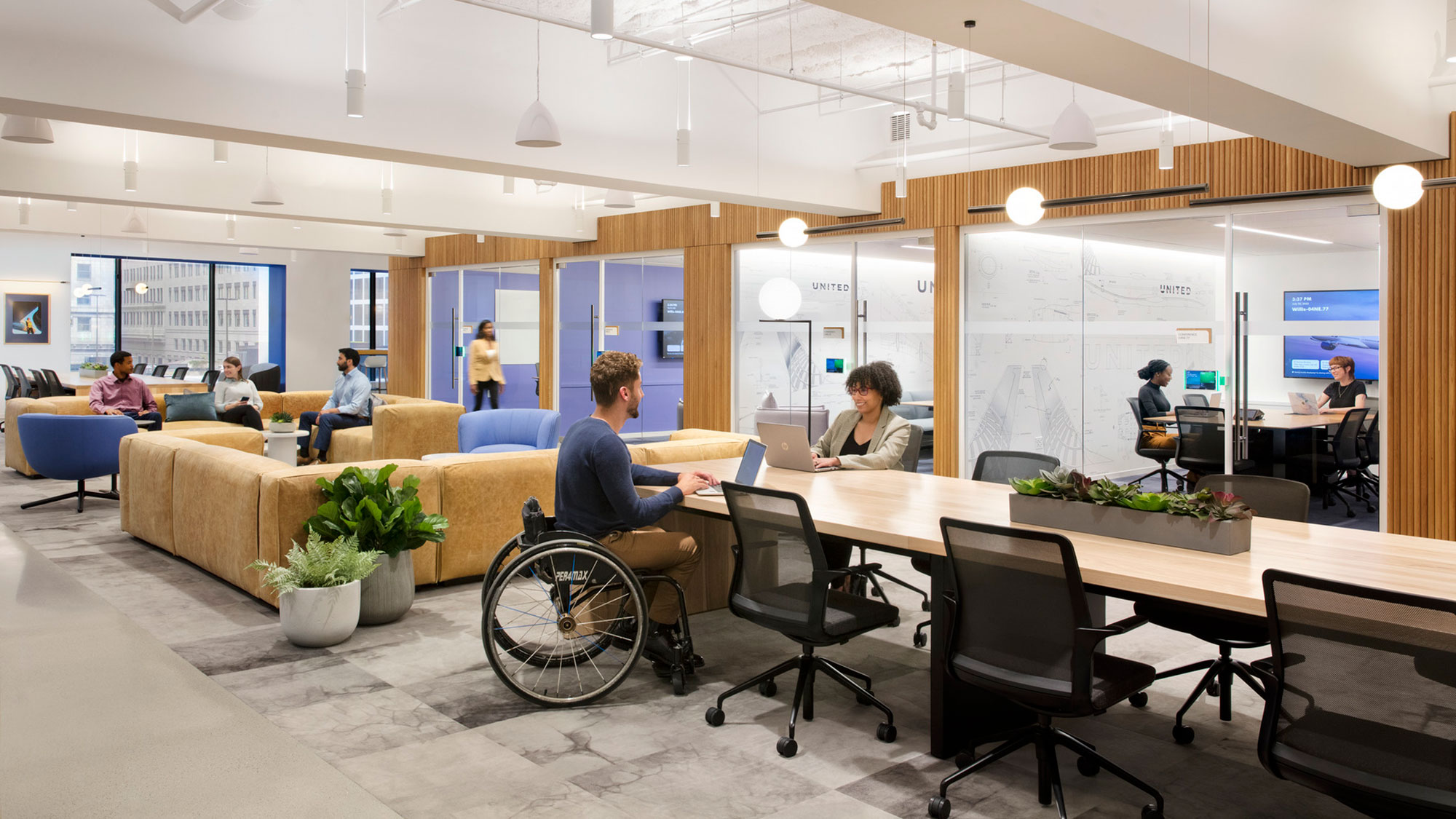
A Defining Moment
While repurposing collaboration space into individual space offers an easy, relatively inexpensive short-term fix, the long-term implications are less positive. The motivation behind a shift to more in-office presence is to have more in-person collaboration. Decreasing space types that support collaboration undermines the very goal bringing people back into the office is trying to achieve.
For decades workplace design has operated on an “either/or” approach, where increases in one area — more amenities, support spaces, and collaboration spaces — come at the sacrifice of others, usually individual space. This next era needs to embrace a “both/and” approach. Creating environments that superlatively support both individual focus work and rich collaborative work will deliver better experiences and stronger cultures, and ultimately, positive business performance outcomes.
Investing in additional space now, even with associated costs, is a strategic move to avoid regressing to office models from the 1990s that stifled innovation and collaboration. By expanding thoughtfully and intentionally, companies can maintain modern, flexible work environments that foster creativity and productivity.
Let’s not revert to the problems of the past. Let’s embrace forward-thinking strategies that enhance our workplaces and drive future success.
For media inquiries, email .


